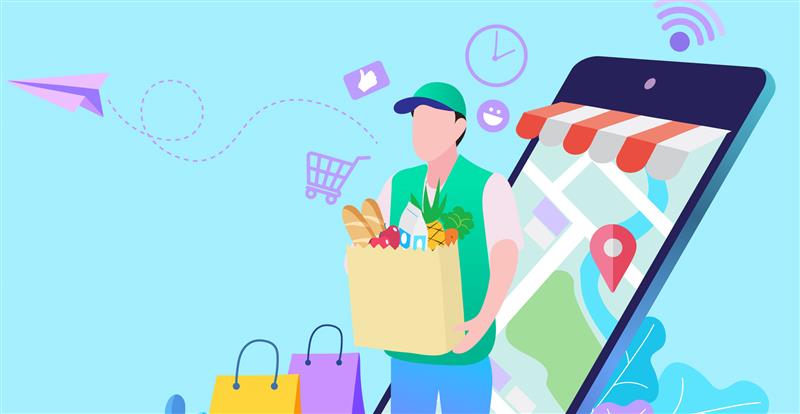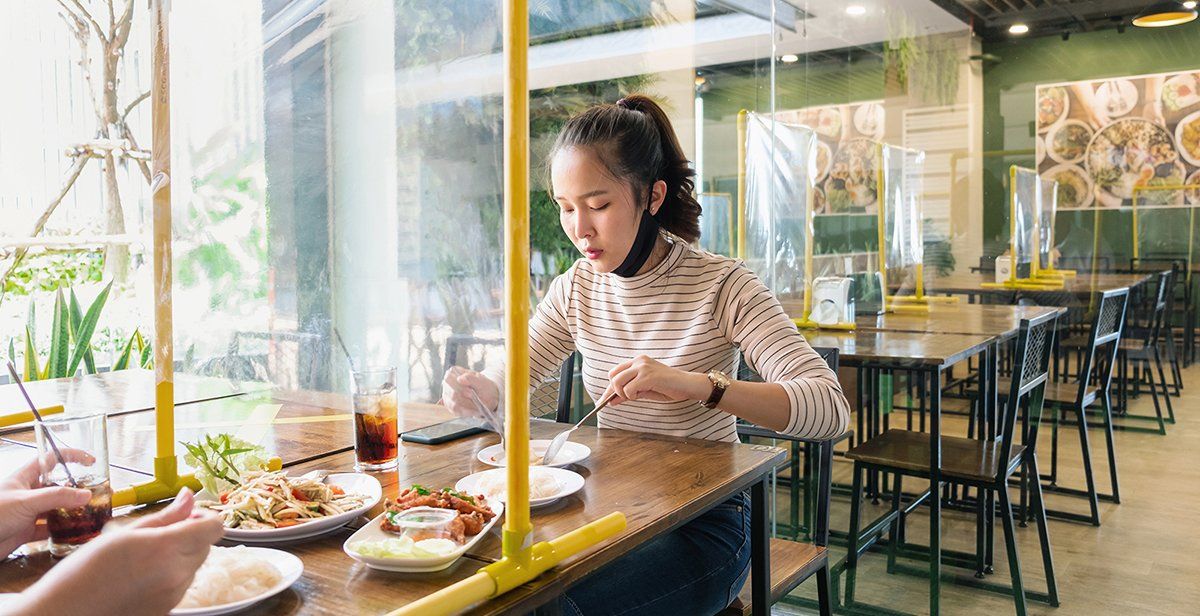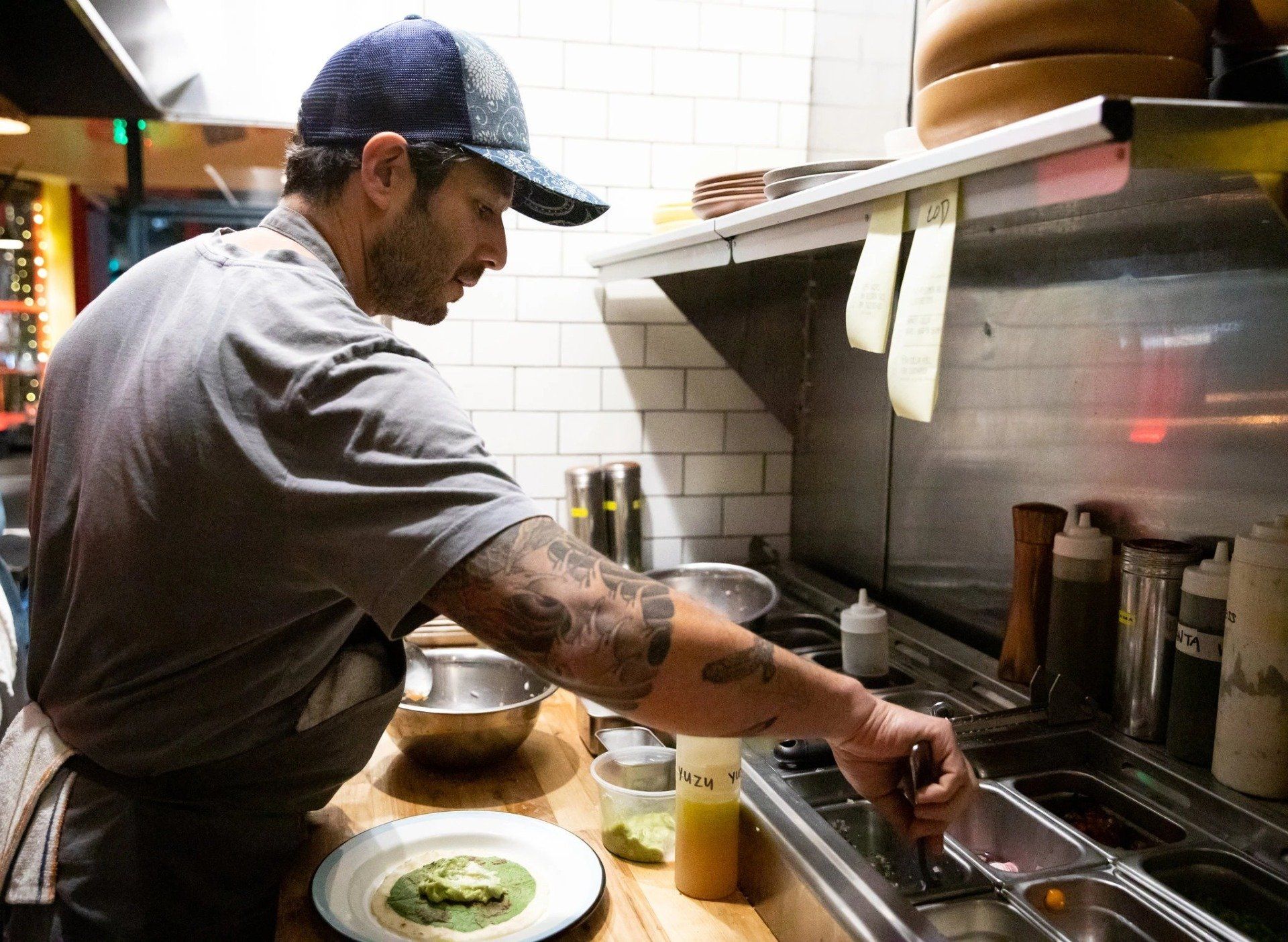Industry Updates
Tips and inspiration on how to manage new stressors and cope with the various challenges we’re all facing in our daily lives

CSSI Staff Post – September 17, 2020 Recently, a few CSSI team members and I attended “A Taste of Tech: Food of the Future,” a virtual panel hosted by General Assembly and moderated by foodservice professionals from The Hatchery Chicago. It delved into a topic I have always been interested in: how food and technology can come together in new ways to make peoples’ lives easier. The panelists discussed how consumers' habits and behaviors will continue to transform with the introduction of new technologies in the food and beverage industry. As expected, nearly every topic related in some way to COVID-19 and how it is changing our food landscape. Here are five key takeaways that can serve as thought starters in your operation: The pandemic is speeding up foodservice technology innovation in ways we’ve never seen before. Kevin Steele, chief information officer of the National Restaurant Association, mentioned front-of-house adaptations that add convenience and reduce contact, such as QR code menus and pay-at-the-table functionality. He also discussed operational innovations such as blockchain relative to supply chain, so operators can track product from its inception at the farm to the store, including how it’s been stored and handled. Grocery delivery is here to stay. Riana Lynn, founder of food science and supply chain software company Journey Foods, noted that people across all generations, from boomers to Gen Zers, use delivery apps to order groceries, and that trend will continue in the future. We need to empower all types of food entrepreneurs. During the panel, Riana stated an interesting data point: There is 1 food scientist for every 40,000 people in the U.S. You never know where or from whom the next brilliant, creative foodservice idea will arise, and the industry should welcome a wide range of voices to pull up a seat at the table. Predictive data can change the way people shop. Lesley Butler, chief marketing officer at meal service company Tovala, thinks that—similar to the way that data informs online ad serving to individuals—grocery stores may use predictive data in the future to better map out stores based on how a majority of consumers shop. Operators and manufacturers should prioritize sustainable packaging. All of the panelists agreed that everyone from CPG brands to independent restaurants should invest in packaging that reduces environmental impact, such as recyclable/reusable containers or packaging with reduced plastic. As the food world continues to evolve, I predict we will see food companies across different sectors use innovative technology to drive sales and build brand loyalty. As if we need more temptation, this technology will likely make eating out or grabbing a quick bite from your favorite restaurant easier and more convenient than ever before!

CSSI Staff Post – August 6, 2020 The shift toward plant-based eating is a trend that is here to stay. According to the International Food Information Council's 2020 Food & Health Survey , over the past year, 28% of consumers are eating more protein from plants, 24% are consuming more plant-based dairy alternatives and 17% are eating more plant-based meat options. As a dietitian, I can get on board with everyone eating more plants—it’s associated with weight loss and reducing your risk for heart disease and type 2 diabetes . Even still, many are hesitant to give it a try. Here are three of the biggest consumer misconceptions I see about plant-based eating: Myth #1: I’ll have to give up meat and animal products. Reality: The great thing about plant-based eating is that there isn’t a certain amount of plants you “have” to eat to follow this diet. The eating pattern focuses on including more fruits, vegetables, whole grains, legumes, nuts and seeds as well as herbs and spices. But it also doesn’t exclude any foods—animal-based products are still on the table (no pun intended). When people approach eating patterns in terms of what can be added versus what should be removed, they’re much more likely to maintain the pattern long term. I define plant-based eating as plants mostly, then everything else. Myth #2: I won’t like the taste. Reality: For many consumers, it can be intimidating to start cooking or eating new foods. My favorite tip is to “go halvsies.” You don’t need to follow an all-or-nothing approach when it comes to plant-based eating! It can be as easy as incorporating more plants into the foods you already enjoy. Try asking for half veggies and half meat when ordering a burrito bowl or topping pizza with an additional veggie or two. Myth #3: It won’t fill me up. Reality: Many people are nervous that plant-based foods, specifically plant-based proteins, will leave them feeling hungry. But you can consume enough protein from plant sources alone, and they also provide additional nutrients, vitamins and minerals that you wouldn’t find in animal-based proteins. For example, a cup of whole-grain quinoa provides 8 grams of protein plus 5 grams of fiber, which may help keep you fuller for longer. You won’t find any fiber in animal sources of protein like chicken, beef or eggs.

CSSI Staff Post – July 24, 2020 As chefs and organizational leaders, many of our business decisions are based upon past experiences. We look to what worked (or didn’t work) last time and try to replicate or build on that. But what if there wasn’t a last time ? The COVID-19 pandemic and its rippling consequences are uncharted territory for virtually all of us. At CSSI, we combat these uncertainties with data and insights so that we may continue to make informed decisions and guide our partners through the unknown. One of our favorite and most trusted sources for this kind of information is Datassential. The Chicago-based foodservice market research firm has been a leader in providing insights and analysis during COVID-19 and recently published results from a survey that uncovers consumer attitudes and intentions following the pandemic. Here are five takeaways from “One Table: Consumer Insights and the Path Forward” that can help you make more informed decisions as you reopen and reformulate your business. 1. Consumers are eager to return to their favorite restaurants Let’s start with some good news. Consumers are excited to return to restaurants—84% of consumers miss dining at a sit-down restaurant. When asked what they are most excited to do after shelter-in-place restrictions have been lifted, “Dine at your favorite sit-down restaurant” was number two response, second only to “Visit with family that you haven’t been able to see.” This, of course, bodes well for the foodservice industry. However, consumers’ eagerness to return to restaurants comes with certain stipulations, and restaurants must be prepared to adjust their business to appeal to updated consumer needs. 2. Sanitation is the #1 priority This may not come as a surprise, but survey respondents indicated that restaurant cleanliness and sanitation will be their top considerations when selecting a restaurant after the time of coronavirus. A few of the sanitation practices that make them feel the safest are well-spaced tables, employees wearing masks, clean restrooms and common areas regularly and visibly wiped down. They want restaurants to communicate these precautions, too. Consumers responded that the number one kind of information they want from foodservice establishments during shelter-in-place restrictions is “Safety measures they are taking to ensure food safety.” So, restaurants (and manufacturers) should put consumers at ease by highlighting these measures throughout their various channels of communication. 3. Some service models are riskier than others When asked specifically which types of places they are most excited to go back to for dining-in, the lowest response was “cafeterias/food halls.” Only 6% of respondents indicated they were excited to return to these restaurant formats—likely due to their crowded, self-service nature. In fact, 76% of consumers said it would be acceptable if restaurants eliminated self-serve areas altogether. This is especially troublesome for non-commercial segments since self-service is a foundational component of many non-comm operations. To overcome these challenges, some operators have found success in shifting to to-go models. 4. Win with to-go Speaking of “to-go”, with capacity reduced and some consumers still hesitant to return to on-premise dining, to-go offerings will become the crux of restaurant success. But not all to-go options are considered equal. Curbside pick-up and drive-thrus were identified as the safest to-go options with delivery from third-party being viewed as the least safe. Additionally, consumers view some foods as being more suited for delivery than others. Pizza, the founding father of food delivery, was identified as being the best performing food for delivery. Sandwiches, wings, sides, dessert/sweet bakery items and meat entrees scored well in this category, too. On the flip side, sushi was identified as the worst performing food for delivery with specialty beverages, fries and fish/seafood following closely behind. 5. Consumers still desire menu innovation Despite a lot of attention being given to familiar comforts during shelter-in-place restrictions, 41% of consumers say they’ll experiment and try new things once these restrictions are lifted. Furthermore, 84% of consumers said it would be acceptable for restaurants to add many new items to their menu after shelter-in-place restrictions are lifted, indicating a strong thirst for innovation. Some of the food trends consumers are most interested in seeing after restaurants reopen are “simple ingredients,” “plant-based foods,” “functional foods” and “smoothie bowls/acai bowls.” Consider working these trends into your menu to attract consumers back to your restaurant. Source: Datassential, “One Table: Consumer Insights and the Path Forward,” May 2020.

CSSI Roundup Post – June 23, 2020 As restaurants across the world navigate how to keep employees and customers safe as they open under new restrictions, many are highlighting their creativity when it comes to promoting social distancing. Here are a handful of examples of the ingenious ways restaurants and bars are making the dining experience safer and more enjoyable for diners. They Haven’t Touched Their Food… Sharply dressed mannequins promote social distancing at The Inn at Little Washington, an establishment with three Michelin stars. The idea is that the mannequins, dressed in vintage ’40s attire, will make the space feel a little less empty as the DC restaurant follows opening guidelines. Read more at Eater Washington DC . Open Hearth restaurant in South Carolina placed G-rated blowup dolls in booths at every other booth and table. The dolls are dressed up in casual clothes and weighted down so they don’t shift. Read more at NBC 12 . In Sydney, Australia, restaurant Five Dock Dining placed cardboard cutouts of people in tables throughout the space. They also play guest “chatter” on the speakers to create a more comfortable atmosphere. Read more at Insider . Tubular Dining Fish Tales Bar & Grill in Ocean City, Maryland, introduced “bumper tables”—wheeled contraptions that allow customers to enjoy a drink and maintain 6 feet of distance from other patrons. Read more at CNN Travel . Curtain Call The owners of Twisted Citrus restaurant in North Canton, Ohio, installed clear plastic shower curtains as barriers. Read more at CNN . Glass Ceilings Both Novy’s Brasserie in Hagen, Germany, and Mediamatic ETEN in Amsterdam, Netherlands, serve diners in outdoor pods that resemble tiny greenhouses. Read more at ABC News . Cheers, Without the Clink Restaurants and bars in Akita, Japan, have installed plexiglass barriers at tables to block droplets from those who are dining at the same table. Read more at Insider . We’re excited to see more inventive tactics as time goes on and operators determine what customers demand from a socially distanced dining experience.

Nation's Restaurant News - June 5, 2020 CSSI’s Take: During the inaugural Restaurants Rise Live virtual conference, Datassential founder Jack Li was hopeful that consumers are excited to get back to restaurants, but safety must be the number one priority for restaurants. He spoke to menu trends pre- and post-pandemic as well as the segments that rank the lowest in terms of perceived safety.

New York Times - June 2, 2020 CSSI’s Take: In Texas, McDonald's operator Maria Acosta fed the volunteers, including protestors, who swept up glass, rubbed away graffiti and repotted plants. In Minneapolis, the owners of Pimento Jamaican Kitchen gave marchers critical supplies, such as gloves, face masks and shields, gauze, eyewash kits, and other first-aid items. Read on to see how other restaurants are responding (or not).

Restaurant Brands International Inc. via PR Newswire - May 12, 2020 CSSI's Take: Jose Cil, CEO of RBI, has laid out an action plan for reopening dining room to one of the largest franchise restaurant systems in the world. Across nearly 15,000 locations, RBI is putting employee safety and consumer confidence first. Acrylic shields, contactless service and "safe distance" training are all in place to welcome back the millions of annual guest in to their restaurant. Self-service items such as fountain soda and condiments will all be taken behind the counter and dispensed by staff members as needed. Dining room beverage fountain systems will be disabled—at least during service. This alone has major implications for beverage sales, format and development. RBI has long had a reputation toward efficient and cost-saving operations. It is hard to believe that they will leave ~15,000 dining room fountain systems dormant. Will they move them behind the counter as well—or will there be a shift toward bottled, CPG beverages?




